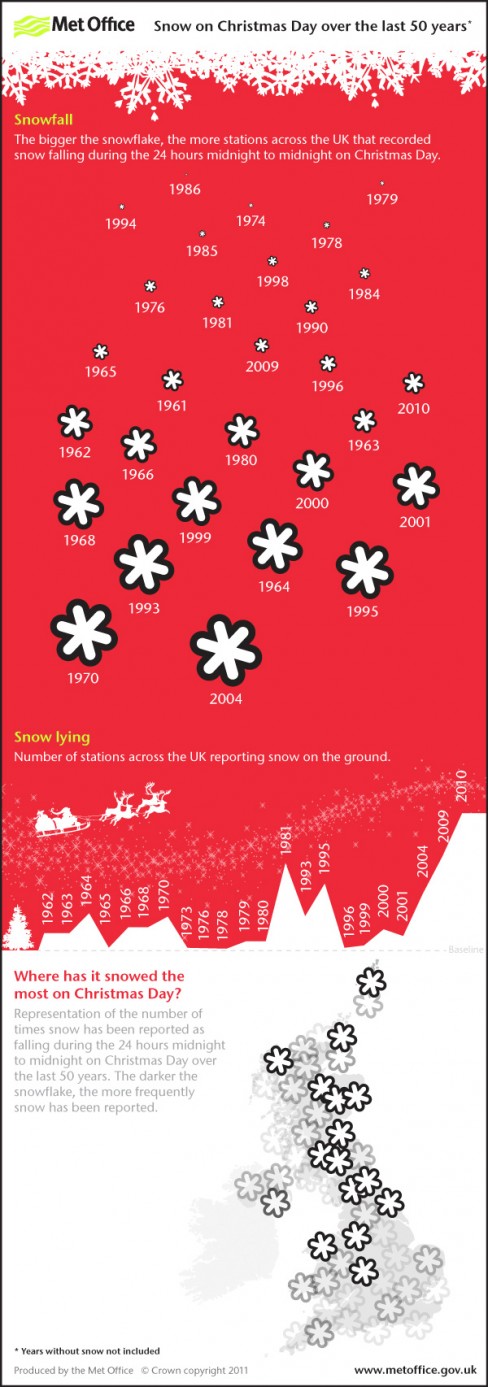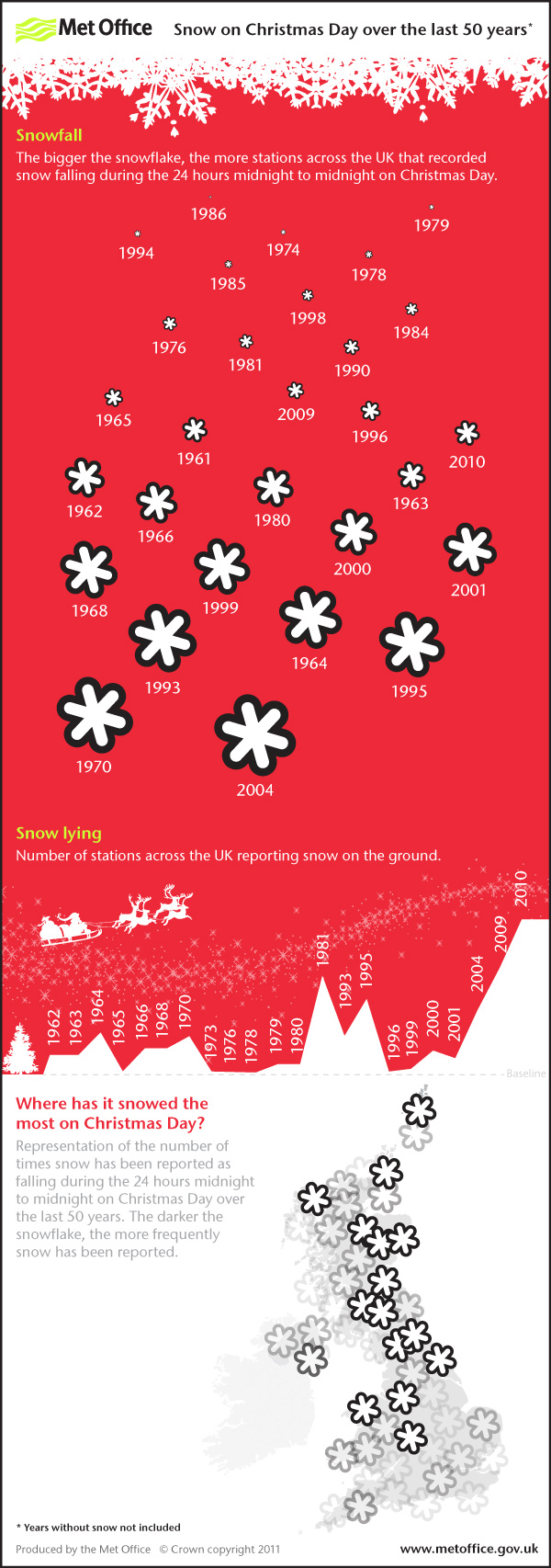If you look forward to a white Christmas each year then statistically, according to the Met Office, you are in luck…but it all depends on what your definition of a ‘white Christmas’ is.
As the Met Office’s infographic below hints we’ve had a lot of white Christmases in the past 50 years: but their definition of a white Christmas might differ a bit from ours. The Met Office explains;
the [technical] definition [of a white Christmas] used most widely, notably by those placing and taking bets, is for a single snowflake (perhaps among a mixed shower of rain and snow) to be observed falling in the 24 hours of 25 December at a specified location.
Taking this definition the Office says just under every three Christmases out of four will be a white one (but not this year). But a single snow flake does not make for a winter wonderland. So while we might technically have a good chance of a white Christmas that doesn’t mean that we will see snow on the ground.
…For most parts of the United Kingdom, Christmas is right at the beginning of the period when it’s likely to snow. Looking at climate history, wintry weather is more likely between January and March than December. Snow or sleet falls on average 5 days in December, compared to 7.6 days in January, 6.8 days in February and 6 days in March.
In 2010 83% of the UK’s Met Office stations recorded snow on the ground and 19% recorded sleet and snow showers on Christmas Day which “was extremely unusual.” By contrast in 2009 57% of stations had snow on the ground but fewer, 13%, recorded sleet or snow showers. Of course, all this depends on where in the UK you are: the further north, the greater your chances of a snowy Christmas Day. Between 2005 and 2008 no ground snow or snow/sleet showers were recorded.
Looking specifically at Christmas 2011 the Met Office says December 25 will be warm and breezy and “[it] is likely to be far from memorable in the record books.”
So, each year the chances are good that we’ll technically have a white Christmas but that doesn’t mean we’ll be able to make snow men.
Click for a larger view, visit the Met Office website here.













